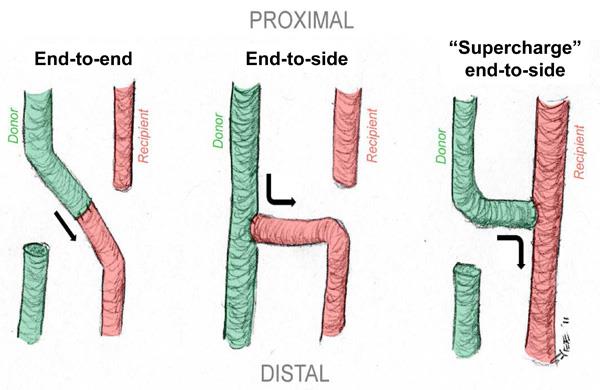Unfortunately, peripheral nerve injuries are common and associated with long-term morbidity and functional disability. Furthermore, nerve injuries, if not repaired, can lead to additional pathologies forming on the injured nerve end including symptomatic neuroma, which have devastating side effects such as chronic pain. The Peripheral Nerve Surgical Research Laboratories takes a multidisciplinary approach to peripheral nerve including basic science, translational, and clinical perspectives. Coupled with the group’s clinical experience and referral practice in peripheral nerve injury, we are uniquely positioned to immediately translate findings to the clinic. In the past, our group developed the first synthetic conduit, investigated nerve allografting that led to the first clinical nerve allotransplant, and most recently introduced nerve transfers to treat spinal cord injury patient population.
The group has ever changing and evolving translational research projects that encompass a true “bed to bench-side” research approach. As an example of a translational research project, our group has demonstrated the efficacy of reverse end-to-side nerve transfers, or “supercharge” nerve transfers. A “supercharge” end-to-side (SETS) nerve transfer moves an expendable donor motor nerve to the side of partially injured recipient nerve, where the native axons may regenerate as well. A SETS nerve transfer provides a surgical option for treatment for incomplete nerve injuries by donating additional axons from motoneurons to reinnervate an end organ target in a more timely fashion while also permitting the native nerve to regenerate. This provides both earlier reinnervation of the target muscle and the potential augmentation or preservation of the muscle and/or distal nerve stump due to an additional pool of motoneurons regenerating their axons.
In one of our studies, a SETS nerve transfer was evaluated using a novel transgenic rat model (the Thy1-GFP rat, where axons and neurons fluoresce under green fluorescent protein). The SETS augmented muscle function preceding nerve regeneration via the donated axons, which could be seen traversing the recipient nerve to reach the muscle target. This study revealed significantly improved outcome when a SETS nerve transfer was used compared to no SETS nerve transfer during recipient nerve repair.
